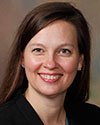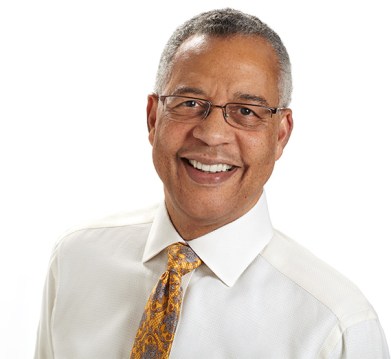Ronald Whitten, a licensed clinical social worker, is excited about the idea of being a patient in a “medical home.’’
A medical home, in this context, is not a residential institution. It’s a physician practice that aims to provide more comprehensive, patient-friendly treatment while also curbing health costs.
Whitten, 70, a retired Emory faculty member who’s on Medicare, is convinced of the medical home’s benefits. He’s a patient of Dr. Jennifer Zreloff, an Emory Clinic internist.
Care for Whitten’s chronic conditions are coordinated under one medical practice, so he doesn’t have to visit several clinicians. Zreloff’s practice also offers the services of a nutritionist and a psychologist. Patients can communicate with a physician via email.
The concept of a patient-centered medical home — which combines the modern-day advantages of computerized medical data with the old-time convenience of having a familiar doctor — is catching on across the country. More primary care practices have started to provide team care, and almost 7,000 have already been recognized by the National Committee for Quality Assurance as patient-centered medical homes.
In Georgia, health insurers such as Aetna, Blue Cross, Kaiser Permanente and WellCare have launched medical home-style programs. Many seniors and adults under 65 appear to prefer this style of medicine.
Nationally, a recently released survey of adults 65 and older found that medical home services are still relatively uncommon, with just 27 percent reporting receiving this care. Yet 83 percent of those getting this team-based care say it has improved their health. And among those not getting these services, 73 percent would want this type of care, the survey of 1,000 older adults sponsored by the John A. Hartford Foundation.
“I’ve been exceptionally pleased,’’ says Whitten, formerly a faculty member of Emory’s Department of Psychiatry and Behavioral Sciences. “They really show concern about the whole person. You’re not just a cog on the assembly line.’’
“There’s an expectation of the patient being involved in their care,’’ Whitten says.
Dr. Reed Tuckson of consulting firm Tuckson Health Connections said Tuesday in Atlanta, “Patients all want to be listened to. They all want to be engaged.”
The medical home ‘’actually is doing what primary care is supposed to do,’’ Tuckson told a conference sponsored by Healthcare Georgia Foundation. It can help primary care doctors survive financially, he added.
To encourage physicians to join, insurers generally pay them more for this coordinated approach. A central theme is to improve quality of care.
“The weakness of care coordination in our health care system represents a clear and present danger to many older patients, causing avoidable harm, errors, complications, overtreatment and hospital readmissions,” says Christopher Langston, program director of the John A. Hartford Foundation. “Team care is still a work in progress.’’
Studies yield mixed results
Despite the high hopes, recent research has pointed to possible holes in the medical home model.
Langston cited the disappointing medical home demonstration results recently reported in the Journal of the American Medical Association. That study of one large pilot program found that over a three-year period, the medical home resulted in limited improvement of quality and did not save money.
On the other hand, University of Minnesota researchers found that the state’s “healthcare home” model improved scores on measures related to colorectal cancer screening, asthma care, diabetes care, vascular care, and follow-up care for depression.
In addition, 2010-2012 health care costs for the 203,071 Medicaid enrollees receiving care at a health care home were 9.2 percent less than the costs for the 264,523 Medicaid enrollees who received care at a non-HCH clinic.
Zreloff says her practice switched over to a medical home three years ago. It’s for Emory employees and retirees and their spouses.
The three physicians in the practice are paid a monthly per-patient fee to manage patients’ health. “For physicians, they get the satisfaction of a job well done,” Zreloff says. “You’re more proactive. You have a team to help keep patients healthy.’’
Patients with multiple health conditions get care coordination, she adds. “We have a care coordinator who can reach out to these patients.”
Zreloff says the patients’ hospitalizations and emergency room visits have dropped. “This is the future of primary care, without a doubt,” she says.
Another Zreloff patient, Selden Deemer, 68, enjoys the convenience of getting an appointment fast. “The surroundings are much more relaxing,’’ he says.
Deemer adds that urine and blood samples are now taken at the doctors’ office, rather than at a lab somewhere else. “You don’t have to go all over the place for different things. It’s more like going to your hometown doctor.”
The Georgia Academy of Family Physicians has been helping develop medical homes. It has devised a Primary Care Medical Home University to support physicians transitioning to this model.
Among participating physicians, the academy says:
** A small practice raised its rate of screening for depression in the elderly from 11 percent to 56 percent.
** A solo physician practice improved the rate of pneumococcal vaccinations for patients 65 and older by 11.6 percent.
** A small physician practice achieved a 6 percent improvement in the rate of tobacco cessation counseling to patients who smoke.
** A multi-physician practice achieved a 2.6 percent increase, to more than 70 percent, in the number of hypertensive patients whose blood pressure was below 140/90.
** A large multi-site practice reported a 15 percent reduction in hospital admissions for its population in its first year of implementation.
Good for a rural setting
Dr. Tom Johnson, a family medicine physician in Cleveland in White County, credits the Family Physicians Association with helping him to convert his practice in November 2012.
Before the switch, he says, “our staff satisfaction and patient satisfaction wasn’t where it should be.”
The conversion took a large financial investment and a lot of time, Johnson says.
Now the practice has improved access for patients, with same-day appointments. The staff focuses on patients getting preventive services, such as immunizations. Patients get reminders of screenings. “Our staff satisfaction has improved greatly,’’ Johnson says. Patients’ ER visits have decreased, he adds.
Johnson says the medical home can work in rural areas, such as the small town of Cleveland and the surrounding mountain country.
He admits that email with patients can be uncomfortable for doctors, with the time and questions involved.
But Johnson adds, “It’s going to improve their care because patients are going to be more invested.”



